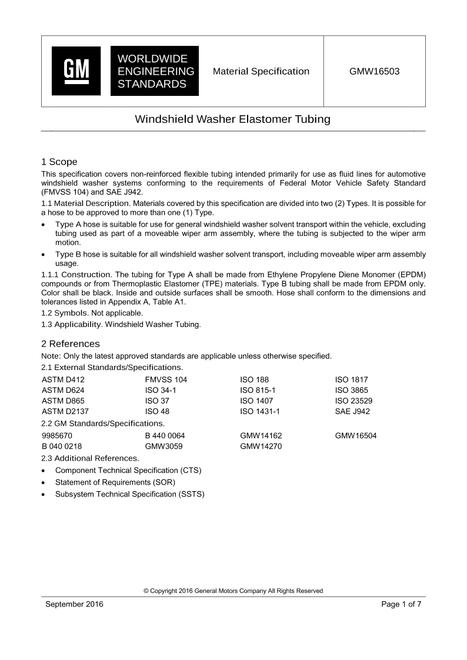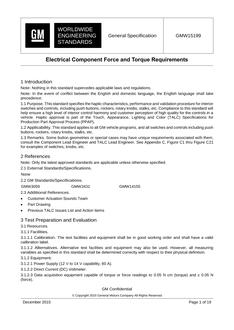-
-
Available Formats
- Availability
- Priced From ( in USD )
-
Available Formats
-
- Immediate download
- $43.00
- Add to Cart
-
- Printed Edition
- Ships in 1-2 business days
- $43.00
- Add to Cart
Customers Who Bought This Also Bought
-

GMW GMW16503
Priced From $43.00 -

GMW GMW15199
Priced From $78.00
About This Item
Full Description
Note: Nothing in this standard supercedes applicable laws and regulations.
Note: In the event of conflict between the English and domestic language, the English language shall take precedence.
This specification covers basic requirements for anodic coatings on aluminum and aluminum alloys.
Material Description.
The anodic coating is an oxide layer produced by an electrolytic oxidation process. The oxide layer provides improved corrosion protection. This coating can be transparent or colored. Anodic coatings shall be either sealed or painted to maintain their appearance.
Symbols.
Not applicable.
Applicability.
Anodic coatings are used for:
Decorative Parts For:
Interior Applications.
Exterior Applications.
Exterior parts, whether clear or colored, are further classified for chemical resistance and application as follows:
• Class A – Extreme alkaline resistance to pH 13.5. For Class A, a supplemental coating is mandatory. Refer to GMW16209 (inorganic topcoat) or GMW16929 (organic topcoat) for requirements.
• Class B – High alkaline resistance to pH 13.0.
• Class C – Alkaline resistance to pH 12.0.
This performance level may be usable in emerging markets or other areas where environments are known to be mild. It is only usable via special drawing note for parts that are not shared among other regions.
Note: If no decorative exterior class is listed on the drawing, Class B is assumed.
Exterior applications should be limited to above beltline. Applications below beltline are subject to a special release and specific requirements of a higher level shall be defined. The corrosion severity in that area is much higher than above beltline because of copper (etc.) containing brake dust.
Exterior colored anodized parts are required to be Class A.
Functional Parts For:
Interior Applications.
Exterior Applications.
Exterior Applications including painted aluminum parts and hard anodized layers. Hard anodized coatings are characterized by their hardness and a thickness of more than 25 μm. For applications that need minor corrosion protection and also high wear protection, the hard-anodic layer may not be sealed. For applications that need a very high corrosion protection, but only moderate wear protection, the hard-anodic layer has to be sealed. Anodized coatings used as a paint substrate (designation FETu (see Section 8)) are used unsealed or partially sealed (e.g.; 5 minutes in hot water) to provide the best paint adhesion.
Document History
-
GMW GMW14665
currently
viewing
Anodic Oxidation Coating on Aluminum- Most Recent
-
GMW GMW14665
Anodic Oxidation Coating on Aluminum- Historical Version
-
GMW GMW14665
Anodic Oxidation Coating on Aluminum- Historical Version
-
GMW GMW14665
Anodic Oxidation Coating on Aluminum- Historical Version
-
GMW GMW14665
Anodic Oxidation Coating on Aluminum- Historical Version
-
GMW GMW14665
Anodic Oxidation Coating on Aluminum- Historical Version
-
GMW GMW14665
Anodic Oxidation Coating on Aluminum- Historical Version



